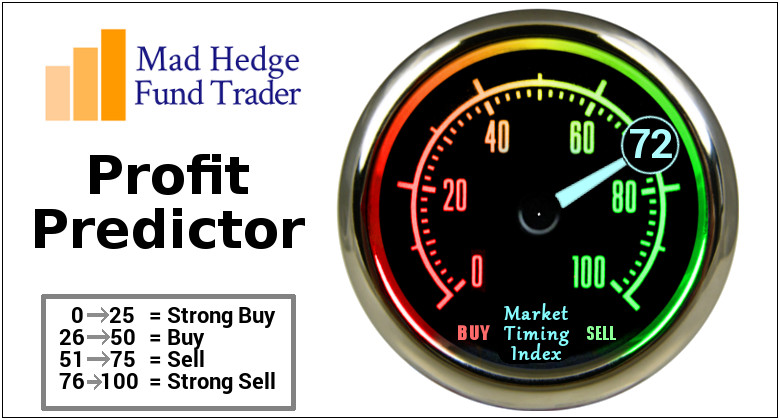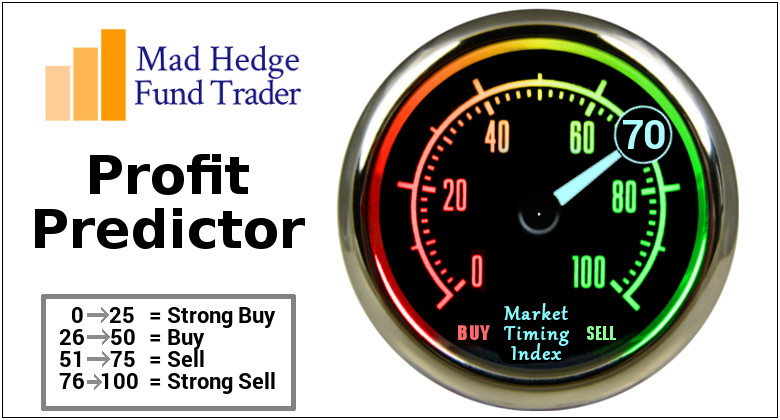Mad Hedge Technology Letter
October 29, 2021
Fiat Lux
Featured Trade:
(APPLE HIT BY LOGISTIC CHAOS)
(AAPL)

Mad Hedge Technology Letter
October 29, 2021
Fiat Lux
Featured Trade:
(APPLE HIT BY LOGISTIC CHAOS)
(AAPL)

The numbers tell the story for Apple (AAPL) — 745 million paid subs.
It’s not at Facebook levels yet, but Apple’s 745 million almost entirely can claim to buying multiple Apple devices.
Then step back and admire the increase of 160 million paid subs versus just 12 months ago and understand this minor dip in today’s shares is just another buying opportunity.
Being able to add 160 million paying subs in 12 months stems from the ability to continue to launch new services and new offerings within the services that they already have, new features that are game-changers.
In short, that’s how you grow a large business that does $68 billion in the last 12 months with levers that are diversified as any.
At a granular level, The Apple App Store notched a September quarter record.
This highlights the trend that consumers are paying on the platform and are happy to do it, which is why the services keep growing to double digits.
I applaud Apple for taking a stand against ad technology and giving privacy back to the user.
It’s a luxury they can afford, but I believe it will turn into a tailwind.
The feedback from customers is overwhelmingly positive.
Customers appreciate having the option of whether they want to be tracked or not.
It’s just another feature that goes into making Apple one of the best tech firms in the world.
Some more accomplishments this past quarter was setting an all-time record for Mac sales and quarterly records for iPhone, iPad, wearables, home, and accessories, representing 30 percent year-over-year growth in products.
This level of sales performance, combined with the unmatched loyalty of Apple’s customers and the ecosystem strength drove services to an all-time revenue record of $18.3 billion, up 26 on services.
Some people in the industry and some people outside the industry thought that the pandemic would reduce demand, they pulled their orders down, things reset. And what really happened was demand went up and went up even more than a straight trend would predict. And so, the industry is working through that now.
When everything is working, it’s hard to pick the bad out. However there was one black eye, and I would say nothing structural, but a consequence of the external variables Apple can’t always control, i.e. supply.
“Constraints” reared its ugly head to the tune of a $6 billion revenue dollar impact, driven primarily by industrywide silicon shortages and COVID-related manufacturing disruptions.
Supply constraints cost Apple $6 billion and it affected the iPhone the iPad and the Mac.
Chips are becoming harder to secure, especially the legacy variation.
Next, was the pandemic-related manufacturing disruptions in Southeast Asia which produce many of Apple’s products.
However, the situation has eased in Southeast Asia, and fewer disruptions in October bode well for next quarter’s earnings.
But from a demand point of view — demand is very robust.
Apple supply simply can’t meet the global demand for its own products, which has grown over the pandemic.
Long term, I look at this as a good problem, because the supply chain will get sorted, and bottlenecks will fix themselves.
CEO Tim Cook likes to say that Apple’s operational team is “world-class” and him being an operational guy himself originally, I can give him the benefit of the doubt.
There is nothing to worry about with Apple.
They remain incredibly profitable and efficient, and any short-term weakness is an appetizing buying opportunity for investors.

“We also welcome any regulation that helps the marketplace not be a race to the bottom.” – Said CEO of Microsoft Satya Nadella
When John identifies a strategic exit point, he will send you an alert with specific trade information as to what security to sell, when to sell it, and at what price. Most often, it will be to TAKE PROFITS, but, on rare occasions, it will be to exercise a STOP LOSS at a predetermined price to adhere to strict risk management discipline. Read more
Global Market Comments
October 29, 2021
Fiat Lux
Featured Trade:
(WHICH IS THE CHEAPEST US STATE?)
When John identifies a strategic exit point, he will send you an alert with specific trade information as to what security to sell, when to sell it, and at what price. Most often, it will be to TAKE PROFITS, but, on rare occasions, it will be to exercise a STOP LOSS at a predetermined price to adhere to strict risk management discipline. Read more
Mad Hedge Biotech and Healthcare Letter
October 28, 2021
Fiat Lux
Featured Trade:
(AN ANYTIME, ANYWHERE HEALTHCARE STOCK)
(TDOC), (AMZN), (AMWL), (WMT), (HIM)

Following massive gains at the onset of the COVID-19 pandemic, several healthcare growth stocks have fallen a long way from their highs.
In fact, some high-quality names have become potential bargains due to the market's recent negative turn.
In this situation, we can apply Warren Buffett’s advice: "We simply attempt to be fearful when others are greedy and to be greedy only when others are fearful."
That is, I think it might just be the time to be a bit greedy.
One of the companies affected by the massive pullback is Teladoc (TDOC).
Over the past 1.5 years, Teladoc has been on a rollercoaster ride when it comes to its price action.
Initially, the stock was regarded as merely a COVID-19 pandemic play with limited growth in the future.
Because of that perception, Teladoc's price started to drop the moment the people got their vaccine shots.
Some investors believe that when things go back to normal, the whole telehealth industry will become pointless.
I don't think that's the case.
I believe that digital medicine and the presence of virtual health services will become mainstays in our lives—and Teladoc is in an enviable position as one of the pioneers in this disruptive industry that's only starting to take on the healthcare system by storm.
When the pandemic started, it was nearly impossible for most people to gain access to healthcare.
Most patients were scared to travel to the doctor for consultations, causing them to cancel and postpone appointments.
What Teladoc offered is to turn the impossible possible for several patients who needed access to their healthcare providers—and its efforts were rewarded in spades.
In 2019, Teladoc reported $553 million in total revenue, increasing by 32% from its 2018 earnings.
By 2020, the business exploded to reach a whopping $1.09 billion, showing a massive 98% growth year-over-year. Moreover, visits and consultations skyrocketed by 206%.
To hold on to its lead, Teladoc has been working hard to bolster its competitive positioning. It seized a blockbuster acquisition and bought Livongo for $18.5 billion in cash and stock.
Adding Livongo to its portfolio means cornering the market on remote monitoring for patients suffering from chronic diseases.
This addition to its business not only expands Teladoc's business, but also opens a massive addressable market worth $50 billion to the company.
Teladoc can leverage this vast network through cross-selling products and services, thereby creating the Amazon (AMZN) of the healthcare world—a platform with an unbeatable ecosystem and an irresistible value proposition.
Since the merger, the two companies have developed a full-person digital healthcare platform called Primary360.
Meanwhile, Teladoc's growth story carries on, with the total revenue for 2021 already approaching the $2 billion mark.
This signifies an impressive 84% increase on top of the company's COVID-19-induced spurt.
As for 2022, Teladoc is projected to grow at a conservative 29%.
Despite the impressive growth of Teladoc, the company has barely scraped the surface.
Overall, the virtual care market is estimated to be worth $250 billion annually. Although Teladoc holds the most significant share thus far, it's evident that it has less than 1% of the market share.
In fact, the telemedicine industry is projected to be valued at half a trillion dollars globally by 2030.
Considering that Teladoc's yearly revenue thus far is sitting at only $2 billion, the company definitely has a lucrative growth runway in the coming 9 years.
In 2020, its stock price roughly tripled from being under $100 to reaching $300. Recently, though, Teladoc's price has gone down to approximately $130.
Given its obvious room for growth, I say this stock is undervalued. So, investors are granted the chance to add this company to their portfolio at a relatively low price.
With the massive market potential of this industry, it comes as no surprise that Teladoc now faces intense competition in the field.
The strongest rivals of the company in the telehealth segment include Amwell (AMWL), Walmart (WMT), Hims and Hers Health (HIM), and even Amazon.
With the market's sheer size, though, the situation doesn't seem to be a winner-takes-all type.
The space is definitely massive enough to support more than one telehealth company.
However, Teladoc does have the advantage as the first mover. It also has its impeccable partnership with Livongo, making it an anytime-anywhere-healthcare service.
So far, I can say that Teladoc is off to an excellent start in a rapid growth segment. I especially appreciate the company's goal to disrupt the medicine and healthcare space—a field that is in dire need of a revolution to eliminate the debilitating costs and crippling inefficiencies.
More than that, I think Teladoc is becoming instrumental in boosting the reach of the most effective medical professionals and offering a remarkable platform to promote artificial intelligence innovation in healthcare.
Ultimately, this will help enhance the quality of healthcare received by patients.
When looking at disruptive technologies, I always say that it's best to invest in companies working to shape the future.
This goal is typically a surefire way to make money in the long run, and Teladoc perfectly suits the description.
Mad Hedge Bitcoin Letter
October 28, 2021
Fiat Lux
Featured Trade:
(SHIBA INU COIN)
(BTC), (SHIB), (ETH), (DOGE)

This article is not a joke — this is an article about a parody token that is now a real thing.
There are meme stocks and there are meme tokens.
There is the argument out there that the flood of liquidity is giving these assets their time in the sun.
I am not saying these assets are great to buy and hold long-term, hardly not, but they do offer the volatility for traders to jump in and out of them for a nice profit.
Shiba Inu Coin (SHIB), a popular meme token based on another alternative coin Dogecoin (DOGE), is a decentralized cryptocurrency created in August 2020 by an anonymous person or persons known as "Ryoshi."
SHIB is red hot and that’s been the case literally this whole year so far.
This dog-inspired cryptocurrency is up 140% in the past 7 days and hit an all-time high of $0.00007592.
Shiba Inu Coin now ranks No. 11 among the top cryptocurrencies by market value capping a surge of over 60,000,000% over the past year.
Before investing in any altcoins, it’s important to understand that these coins are a great deal riskier than something like Bitcoin.
It sounds funny just saying that but yes, there are different degrees of risk with different coins.
There has been a lot of hype surrounding the Fear of Missing Out (FOMO) movement, but I would say, only deploy capital in altcoins if you are willing to write off the entire investment.
And I’ll say this, it’s a speculative investment in general, so at least do a little due diligence before you take the plunge.
Shiba Inu Coin is an Ethereum-based ERC-20 token, which means it was developed on the Ethereum blockchain, rather than its own blockchain.
Ryoshi decided to launch SHIB on Ethereum (ETH) because it’s “already secure and well-established,” according to the SHIB white paper, or, as its community calls it, “woof paper.”
I have gone on record saying that Ethereum will go higher than Bitcoin in the future because it’s that attractive platform that every DeFi developer wants to build on, and SHIB is just one iteration of that.
Developers also choose to roll out their projects using the ETH platform because it’s way cheaper than building a platform from scratch.
SHIB has a total supply of 1 quadrillion.
Ryoshi is on record saying he doesn’t have any SHIB, and nearly half of its supply is locked in a liquidity pool on decentralized exchange Uniswap.
The rest was sent to Ethereum co-founder Vitalik Buterin.
According to SHIB’s white paper, Ryoshi sent tokens to Buterin with hopes that he’d keep the tokens.
However, Buterin did not.
He donated a significant amount to the India Covid Relief Fund and other charities, which goes to show that now all Covid Relief Funds are created equal.
This is not a joke, and some people might be laughing when they read what this coin is based on.
That is why altcoins may require additional caution due to their differences from something like bitcoin, including their structure, supply, and utility.
SHIB supporters might point to a comprehensive ecosystem, which includes smart contract capabilities; NFTs, or nonfungible tokens; and opportunities for liquidity mining, to name a few, that offer utility beyond community.
Another juicy piece of news saw rising support for a Change.org petition urging trading platform Robinhood to list SHIB on the broker’s platform.
The petition has harvested 334,500 signatures so far.
Being able to trade SHIB on a massive platform Robinhood would be another 50% leg up for the price of SHIB.
A Robinhood spokesperson declined to comment on this request.
When asked by analysts, CEO of Robinhood Vladimir Tenev was noncommittal to accommodating SHIB on Robinhood, but the bigger it gets, the more momentum it gains for listing it.
That’s the thing about these altcoins, they can come out of nowhere, and an even “fake it till you make it,” SHIB is making people rich and all that would have taken is a few hundred-dollar investment in January.
Now the secret is out about SHIB, I would scale in slowly, but don’t bet the ranch on this speculative bet and prepare for high volatility.
Legal Disclaimer
There is a very high degree of risk involved in trading. Past results are not indicative of future returns. MadHedgeFundTrader.com and all individuals affiliated with this site assume no responsibilities for your trading and investment results. The indicators, strategies, columns, articles and all other features are for educational purposes only and should not be construed as investment advice. Information for futures trading observations are obtained from sources believed to be reliable, but we do not warrant its completeness or accuracy, or warrant any results from the use of the information. Your use of the trading observations is entirely at your own risk and it is your sole responsibility to evaluate the accuracy, completeness and usefulness of the information. You must assess the risk of any trade with your broker and make your own independent decisions regarding any securities mentioned herein. Affiliates of MadHedgeFundTrader.com may have a position or effect transactions in the securities described herein (or options thereon) and/or otherwise employ trading strategies that may be consistent or inconsistent with the provided strategies.
